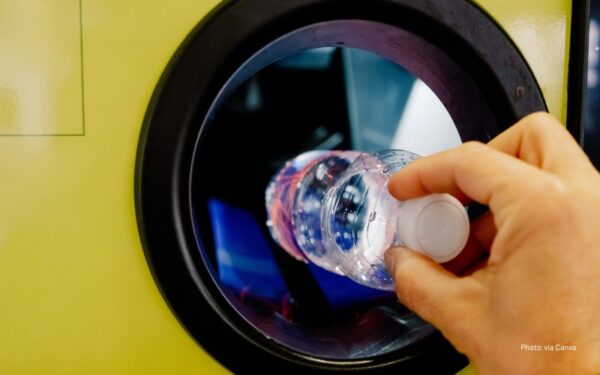
Kids are most often poisoned by lead in their homes, especially in those built before the 1978 ban on lead paint. Stronger standards will help prevent the lifelong impacts of lead poisoning, but only if officials have the funding and tools to implement them. Photo: wasan prunglampoo via IStock
Maine has taken significant strides in preventing childhood lead poisoning by implementing a more protective standard for what constitutes poisoning. But a stronger standard will only help Maine’s children if local officials can actually implement it. And here’s where the State is falling short.
As National Lead Poisoning Prevention Week (October 22–28, 2017) approaches, we are urging Maine lawmakers to provide state and local officials with the funding and tools they need to implement and enforce the state’s new lead standard.
This October and beyond, CLF will continue to spread the word about the dangers of lead poisoning, the importance of prevention, and the need for full funding and enforcement of Maine’s lead laws.
The Dangers Posed by Lead and the Importance of Prevention
More than 100 children in Maine are diagnosed with lead poisoning every year. This is a staggering statistic by itself, but unfortunately, many children never even get tested. That means the number of children poisoned each year is likely much larger.
Lead poisoning is particularly harmful to children. It causes learning disabilities, behavioral problems, hearing damage, language or speech delays, and lower intelligence. It significantly affects a child’s growth and development in ways that can last a lifetime. Those children who go undiagnosed never receive the treatment they need, robbing them of their full potential.
Early detection and treatment can allay these health impacts, but ultimately, prevention is essential.
Lead Paint is Far More Common than We Think
Kids are most often poisoned by lead in their homes. The fact is, more than half of Maine homes and apartments may still have lead paint today. Exposure is most common in buildings built before 1950 (when paint contained up to 50% lead). It’s also prevalent in buildings built before the 1978 ban on lead paint and is often uncovered when repainting or remodeling is done.
Dust from lead paint is the most common source of poisoning. Dust is produced wherever lead paint rubs, such as door frames, windows, or floors. Other sources of lead poisoning include soil next to buildings that were painted with lead paint and water that contains lead from brass, lead solder, or lead pipes.
Funding and Enforcing Maine’s Lead Poisoning Health Standard
As we reported earlier this year, Maine recently strengthened its blood lead level standard from 10 micrograms per deciliter to 5 micrograms per deciliter. If a child’s blood level equals or exceeds that amount, then the Maine Center for Disease Control and Prevention (CDC) provides a full investigation of the child’s home. This more protective standard makes Maine a leader in the battle against lead poisoning in America.
But Maine’s nation-leading standard is only as good as the funding and tools provided to the agencies enforcing it. Maine recently revised its laws to permit state health officials to levy fines for violations of lead laws and allow the Maine CDC to hire additional lead prevention personnel. These are important steps in the right direction, but more can, and should, be done.
CLF urges lawmakers to do more to implement the state’s strong new standard – rather than threaten to sacrifice the health of our children in the political wrangling of budget cuts, as they did last summer.
Upcoming Lead Legislation
Three bills in the current legislative session present opportunities for extending lead poisoning protections in Maine. One is L.D. 691, An Act to Prevent Lead Poisoning in Children, which was carried over from the prior legislative session. It would require the Department of Health and Human Services to provide free home lead test kits to families who have children and live in houses older than 1978.
The second bill is L.D. 40, An Act to Strengthen Requirements for Water Testing for Schools, which would require schools that take drinking water from public water systems to test it for lead and other contaminants. It would also require the State to make those test results public. This bill has also been carried over from the prior session.
The third is L.D. 1542, An Act to Support Lead Abatement in Older Residential Properties, which was also carried over, and which would establish a residential lead abatement program to be administered by the Maine State Housing Authority. It would also provide grants to municipalities that have administered a lead abatement program and to housing units and housing projects that meet eligibility requirements.
CLF will continue to monitor these important bills and let you know when you can take action to help move them forward.
Help CLF Spread the Word about Lead Poisoning Prevention
Later this month, National Lead Poisoning Prevention week will aim to raise awareness and educate families about the threats posed by lead poisoning and the ways to prevent it from harming our children. As in years past, CLF is helping to get the word out about the threats posed by lead and the importance of lead testing. Help us spread the word by sharing this blog as well as helpful lead poisoning information available from Kids Legal, the Maine Center for Disease Control and Prevention, and the Maine Department of Environmental Protection.
And, be sure to join our teleconference on October 25. CLF New Hampshire Director Tom Irwin will talk about CLF’s efforts to strengthen lead poisoning prevention efforts across New England. He’ll be joined by Kate Kirkwood, who will discuss ways to avoid exposure to lead hazards, and Dr. William Storo, a New Hampshire-based pediatrician who will share his experience treating kids with lead poisoning and the importance of improving our current systems to require universal screenings.



